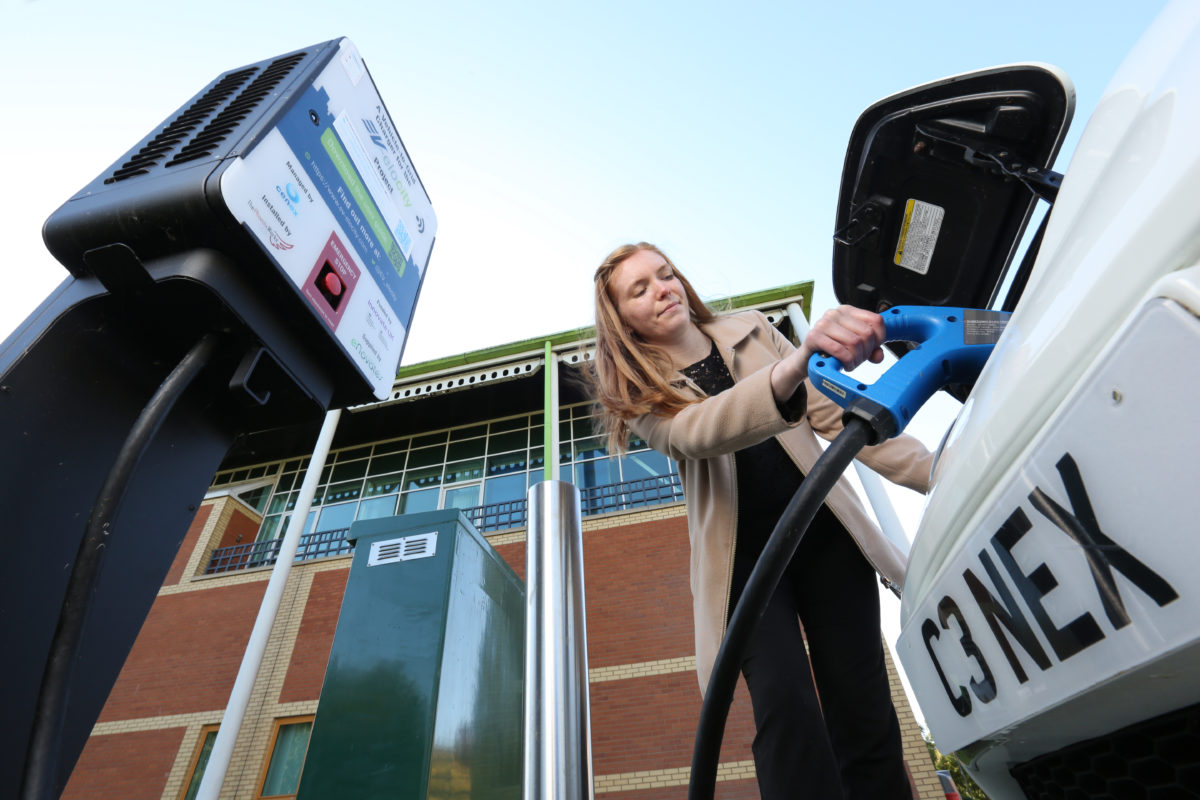
- Category:
- News
4 Chargepoint Innovations for the Future
EV chargepoints are a relatively new technology and further innovation is required to meet the diverse needs of all EV drivers.
Current challenges include:
- Balancing electricity supply and demand
- Electrification of long range and/or heavy vehicles
- Trip hazards from charging posts and cables
- Chargepoint accessibility
Here are some of the innovative infrastructure solutions Cenex is investigating:
Vehicle-to-Grid
V2G is a system whereby plugin electric vehicles, when connected to a V2G charger, can provide bi-directional flows of energy and data.
EV batteries can then store electricity – when there is an abundant supply – and discharge it to power homes and businesses or into the national grid when it is most needed.
Wireless Charging
Wireless charging (also known as inductive charging) is a type of wireless power transfer which uses electromagnetic induction to provide electricity to a stationary (static) or moving (dynamic) vehicle.
Wireless charging will allow vehicles that drive long distances or have heavy duty cycles to extend their range without increasing the battery capacity.
In addition, wireless charging removes the need to ‘plug in’ and eliminates the ‘slip, trip and fall’ hazard created by trailing cables from kerbside EV charging.
Existing street furniture
As a number of existing street furniture assets require power sources, some technology developers are utilising any ‘spare’ capacity at these supplies to enable EV charging without the need for additional street furniture. This can make installations more cost-effective and less disruptive.
Two key examples are Lampposts and Broadband Cabinets.
Pop-up chargepoints
Pop-up chargepoints feature a mechanism by which the chargepoint can sit flush to the pavement surface when not in use or, in some cases, while charging is underway.
They are designed for residents who do not have access to off-street parking and are intended for overnight charging so the chargepoint and cables are removed during the day when pavements are busiest.
Read more: An Introduction to Innovative Electric Vehicle Charging Infrastructure